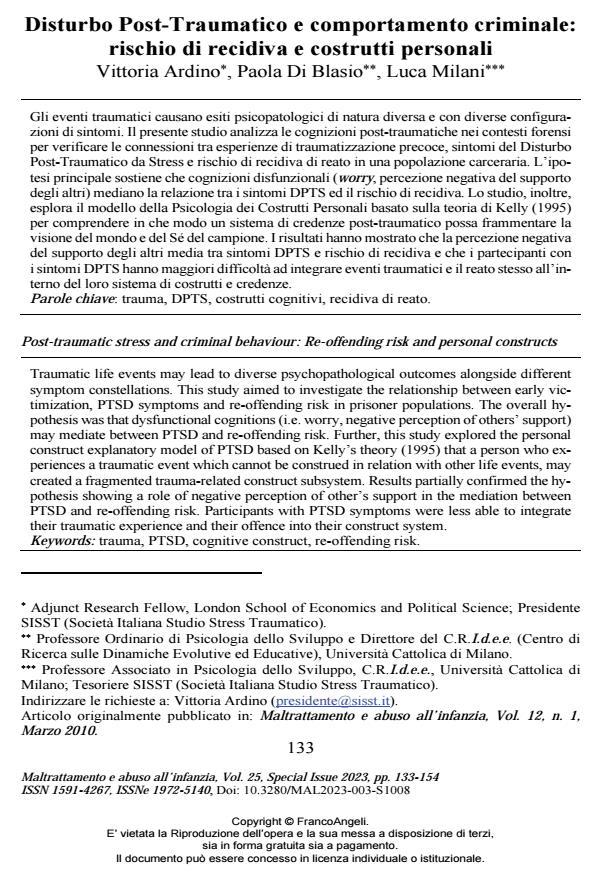Post-traumatic stress and criminal behaviour: Re-offending risk and personal constructs
Journal title MALTRATTAMENTO E ABUSO ALL’INFANZIA
Author/s Vittoria Ardino, Paola Di Blasio, Luca Milani
Publishing Year 2024 Issue 2023/3 Suppl.
Language Italian Pages 22 P. 133-154 File size 294 KB
DOI 10.3280/MAL2023-003-S1008
DOI is like a bar code for intellectual property: to have more infomation
click here
Below, you can see the article first page
If you want to buy this article in PDF format, you can do it, following the instructions to buy download credits

FrancoAngeli is member of Publishers International Linking Association, Inc (PILA), a not-for-profit association which run the CrossRef service enabling links to and from online scholarly content.
Traumatic life events may lead to diverse psychopathological outcomes alongside different symptom constellations. This study aimed to investigate the relationship between early victimization, PTSD symptoms and re-offending risk in prisoner populations. The overall hypothesis was that dysfunctional cognitions (i.e. worry, negative perception of others’ support) may mediate between PTSD and re-offending risk. Further, this study explored the personal construct explanatory model of PTSD based on Kelly’s theory (1995) that a person who experiences a traumatic event which cannot be construed in relation with other life events, may created a fragmented trauma-related construct subsystem. Results partially confirmed the hypothesis showing a role of negative perception of other’s support in the mediation between PTSD and re-offending risk. Participants with PTSD symptoms were less able to integrate their traumatic experience and their offence into their construct system.
Keywords: trauma, PTSD, cognitive construct, re-offending risk.
Vittoria Ardino, Paola Di Blasio, Luca Milani, Disturbo Post-Traumatico e comportamento criminale: rischio di recidiva e costrutti personali in "MALTRATTAMENTO E ABUSO ALL’INFANZIA" 3 Suppl./2023, pp 133-154, DOI: 10.3280/MAL2023-003-S1008